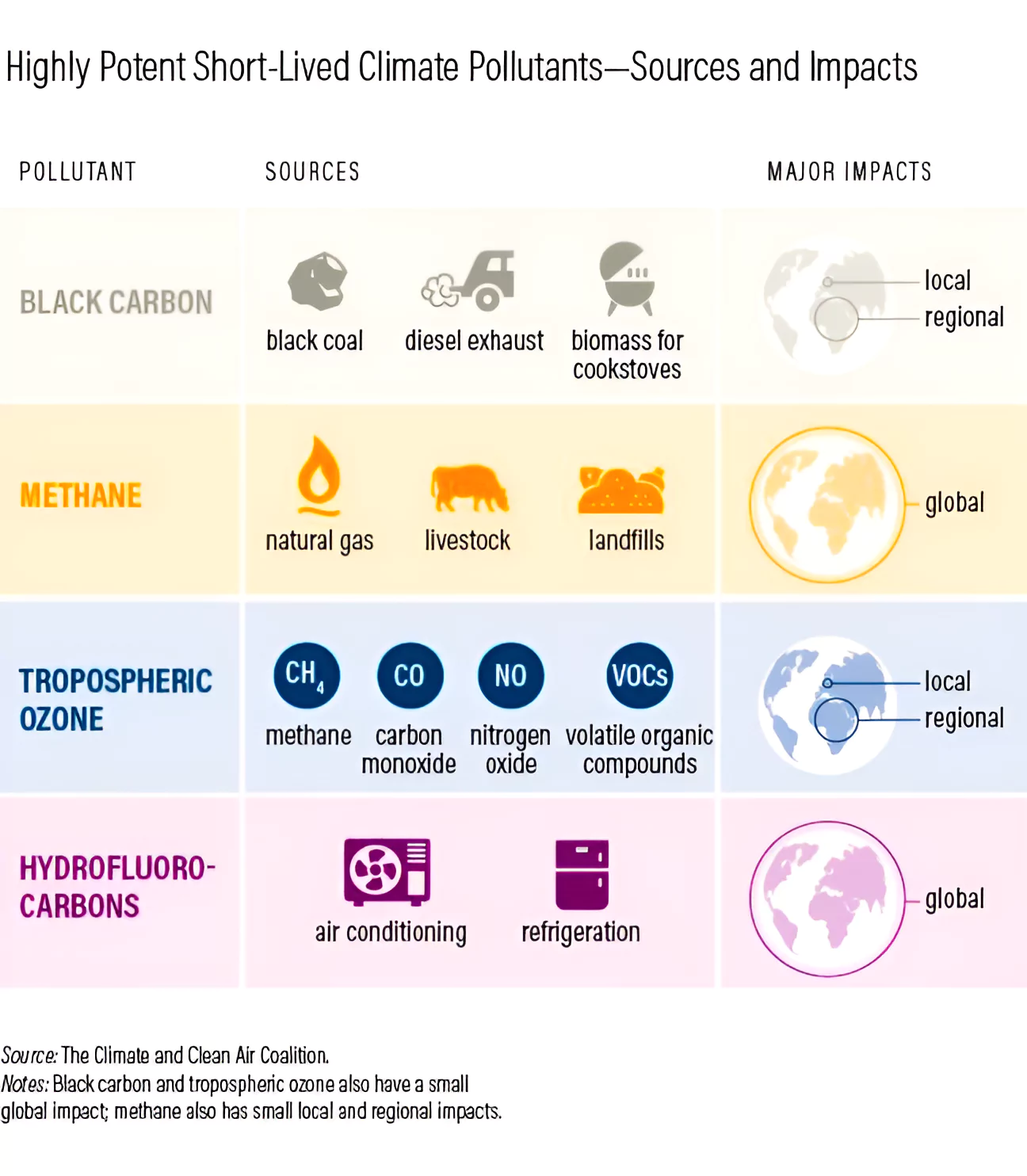Context:
The Climate and Clean Air Conference 2024 emphasized global cooperation to eliminate short lived climate pollutants, such as methane, black carbon, and hydrofluorocarbons.
Climate and Clean Air Conference 2024: Key Highlights

About Short Lived Climate Pollutants:
- They are also known as Super Pollutants.
- Short lived climate pollutants (SLCPs) are greenhouse gases and air pollutants that have a significant impact on climate change and air quality.
- Short lived climate pollutants are responsible for up to 45% of current global warming.
- These pollutants stay in the atmosphere for a shorter time than carbon dioxide
- SLCPs can have a much stronger warming effect than carbon dioxide.
Policy Framework for Short Lived Climate Pollutants on the International Level
- Paris Agreement’s: The main objective of this agreement is to keep low temperatures below 2 degrees.
- Kyoto Protocol: Its main objective is the reduction of global warming.
- It covers 7 greenhouse gases – carbon dioxide (CO2), methane (CH4), nitrous oxide (N2O), hydrofluorocarbons (HFCs), perfluorocarbons (PFCs), sulphur hexafluoride (SF6) and Nitrogen Triflouride (NF3).
- International Gothenburg Protocol: This protocol deals with the issue of air pollution.
- Montreal Protocol on Substances that Deplete the Ozone Layer (Montreal Protocol): This protocol addresses the issue of ozone depletion by substances such as hydrochlorofluorocarbons (HCFCs).
Benefits of Taking Action On Short Lived Climate Pollutants:
- Improved air quality: Eliminating super pollutants can improve air quality worldwide.
- Health Benefits: Removing short-lived pollutants will lead to significant health benefits and save millions of lives, especially among children suffering from asthma.
- Food security: Protecting crops from pollutants like tropospheric ozone can enhance food security.
Drawbacks
While addressing short-lived climate pollutants (SLCPs) has significant benefits, there are also some drawbacks and challenges associated with taking action on them:
Cooling and warming aerosols
- Aerosols are tiny particles or liquid droplets suspended in the air. Natural events and human actions both emit aerosols.
Cooling Aerosols:
- Cooling aerosols, such as sulfate particles, reflect sunlight into space. They have a net cooling effect on the Earth’s surface.
- These aerosols are often produced by industrial processes, volcanic eruptions, and burning fossil fuels.
- Their presence helps offset some of the warming caused by greenhouse gases like carbon dioxide (CO₂).
Warming Aerosols:
- Warming aerosols, like black carbon (soot), absorb sunlight and contribute to local warming.
- Black carbon is emitted from diesel engines, biomass burning, and industrial processes.
- Unlike cooling aerosols, black carbon has a net warming effect on the climate.
|
-
- SLCPs, such as methane and black carbon, have shorter atmospheric lifetimes than long-lived greenhouse gases like carbon dioxide (CO₂).
- Despite their potency, reducing SLCPs alone won’t fully mitigate long-term climate change.
- Removal of cooling and warming aerosols: Intensified Global action on air pollution can be beneficial for air pollution removal, but it is causing the elimination of both cooling and warming aerosols.
- This can lead to new heat extremes.
- Complex Interactions between pollutants and climate:
- Inadequate funding: There is little funding for action against less high-profile pollutants like nitrous oxide and black carbon.
- Regional Variability:
-
- SLCP impacts vary by region. Some pollutants have more pronounced effects in specific areas.
Other Agreements to Remove Super Pollutants From the Atmosphere.
Also Read: Methane Alert And Response System (MARS)
News Source: Down to Earth
![]() 24 Feb 2024
24 Feb 2024
